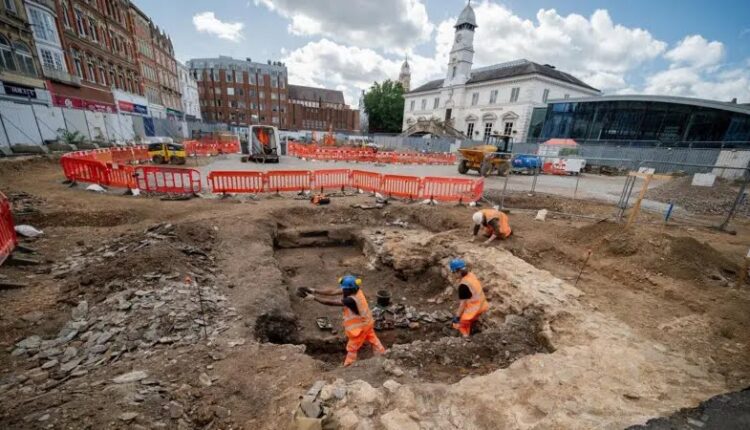Glass floor display of market dungeon ruled out.
Proposals to keep a “vile” mediaeval dungeon on exhibit under toughened glass floors at Leicester market have been rejected.
Archaeologists excavating the region this summer unearthed parts of a 16th-century prison.
Leicester City Council stated that it has considered making the uncovered ruins of a building known as the Gainsborough Chamber a highlight of a new-look £7.5 million market area that is now under development.
Sir Peter Soulsby, the city mayor, said he requested council officers to examine the concept after seeing AI-generated models of how the market might look with see-through flooring.
“It is not a crazy idea,” Soulsby explained. “Archaeological finds have been shown in this manner in the past, but it is not practicable or cost-effective.

IMAGE SOURCE, UNIVERSITY OF LEICESTER ARCHAEOLOGICAL SERVICES
The building’s vestiges, discovered by researchers from the University of Leicester Archaeological Services (ULAS), will be thoroughly examined, recorded and then covered over to create a new trading area.
Soulsby, on the other hand, stated that their finding, as well as Roman remains and evidence of the city’s earliest mediaeval market place surfaces, would be significant.
He claimed: “When they are carefully covered over to allow the area to be returned to its use as a thriving market, I’m determined visitors should be able to find out about their part in our city’s rich history.”
We will most likely post information about the discovery on heritage interpretation boards across the city.”

IMAGE SOURCE, UNIVERSITY OF LEICESTER ARCHAEOLOGICAL SERVICES
Soulsby went on to say, “A centuries-old prominent municipal building with its own prison is quite the find, but it is quite little, not on the scale of Pompeii’s remains, and not as apparent.
According to historian Charles Billson’s book about mediaeval Leicester, one of the prisoners interned in the dungeon in 1533 wrote:
“Master Mayor sent me forthwith to a most vile prison called the Gaynsborrow, then offered to put gives and fetters upon my legs and so to lye upon hard planks without bed or straw, without company or comfort.”
Among the other discoveries uncovered during the dig was the grave of a Roman infant beneath the floor of a timber building estimated to be nearly 1,800 years old.
ULAS digs have also revealed the cobblestone pavement of the first mediaeval market, as well as evidence of the first wooden market booth.
They also discovered prehistoric artefacts, Roman coins, tiles, and kilns, the first ever discovered in Leicester, which the Romans referred site as Ratae.
ULAS has stated that it will publish a comprehensive report on its excavation, and plans are underway to place some of the found objects on public display.
Read more on Straightwinfortoday.com


Comments are closed, but trackbacks and pingbacks are open.